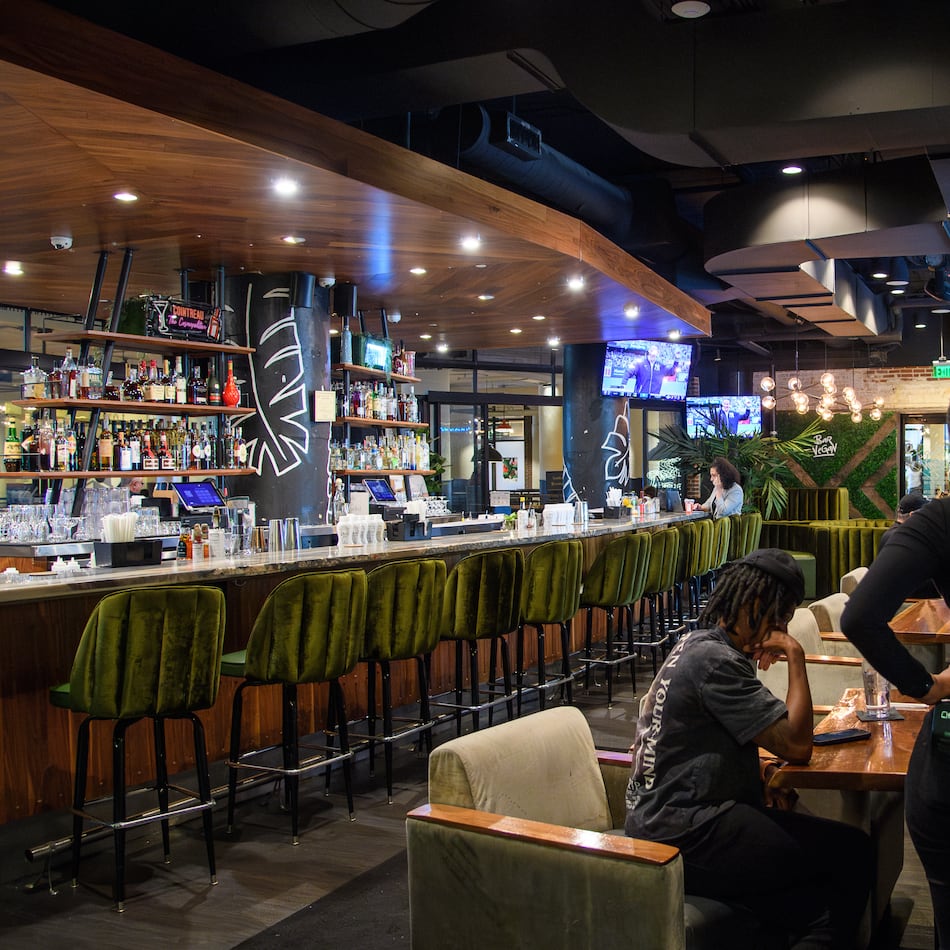Wine enthusiasts have seen dire messages about the industry for years. Pessimists point to falling consumption, reduced production, climate change and, more recently, tariffs. But the future looks rosier in Atlanta when considering the surge of wine bar openings in recent months.
Two nationally recognized Atlanta chefs launched ambitious wine bars in 2025. Steven Satterfield of Miller Union opened Madeira Park in the Poncey-Highland neighborhood with sommelier Tim Willard. In Decatur, chef Terry Koval opened Fawn, a bar focused on European wines and amaro, the bitter herbal liqueur of Italy. Koval also owns the Deer and the Dove and B-Side on Decatur Square.
Fawn and Madeira Park aren’t the only newcomers to the wine bar scene. Side Saddle Wine Saloon will open in Boulevard Heights later this month, and local wine entrepreneurs Jessena and Michael Waldo opened a tasting room for their Divinely Elegant Vines brand in Austell.
Last year saw the openings of Commune in Avondale Estates in May and Marietta Proper on Marietta Square in January. The latter was a James Beard Award semifinalist in the Best New Bar category, while Lucian Books & Wine, which opened in 2021, was a semifinalist for Outstanding Wine and Other Beverages Program.
Both Satterfield and Koval told The Atlanta Journal-Constitution that wine comes first at their new restaurants. In spite of the doom-and-gloom rhetoric around the wine industry, each said they believe metro Atlanta diners are interested in high-quality wines from smaller producers.
Therein lies the disconnect between the wine industry’s fearful headlines and the apparent optimism in the Atlanta restaurant scene. According to multiple industry professionals who spoke with the AJC, it’s the industrial-level global wineries that have been absorbing the majority of losses. They believe there’s still opportunity for smaller producers.
“The largest producers are the most affected today,” said Perrine Prieur Gallardo, owner of Perrine’s Wine, which has three shops in the metro area.
She pointed out that shifting tastes have caused some of the biggest wine producers to adjust their strategies.
“The top one that comes to mind is (E&J) Gallo,” said Gallardo, a certified sommelier who opened Perrine’s in 2010. “They are buying smaller wineries now. I’ve seen it in France and Italy, they’re actually focusing on family estates. They’re not changing the name, right? They keep the name and they’re just enlarging their portfolio.”
Kelly Travis, wine brand manager with Eagle Rock Distributing Company, said younger generations seem interested in wine quality over quantity.
“You want to know what they’re putting in your wine, if it’s natural, if it’s organic, if it’s sulfite-free,” Travis said. “And you want that romance, you want that connection.”
Travis said that Eagle Rock, which works with Madeira Park, has seen most of its recent growth with “little guys” as compared to more generic wine labels. Because wine is an agricultural product, smaller wineries where the owners are heavily involved in farming and production tend to be ripe with stories and emotion, Gallardo said.
“Wine comes from people,” Gallardo said. “It’s a farm product; they’re farmers first... They really care about how they work the land, how to be able to pass it on to the next generation, how to do the best with what they have and just try to make the best wine.”
While the uncertainty of tariffs raises concerns in wine industry, but they’re also not a new phenomenon. In 2019, during President Donald Trump’s first term, the U.S. imposed a 25% tariff on non-sparkling wines from France, Germany, Spain and the United Kingdom.
Carson Demmond, owner of Stone Mountain-based distributor Rive Gauche Wine Company, told the AJC that many in the wine industry seem more prepared for tariffs this time around. Wineries and freight forwarders are offering discounts to reduce pressure on others in the supply chain, she said.
Some of Eagle Rock’s importers are doing the same, Travis said, negotiating lower margins on both sides of the equation rather than simply passing along the potential increased costs. Many in the wine business see tariffs as a temporary storm to weather rather than a permanent shift of economic forces, according to Travis.
Even with the recent market correction, the wine industry remains massive. In 2023, U.S. drinkers consumed nearly 900 million gallons of wine, according to the California Wine Institute’s most recent data, and the country’s total wine sales were more than $106 billion.
Both Gallardo and Travis said they see the most growth serving a customer base interested in smaller, artisanal wine labels.
“There’s a lot more awareness of wine and there are a lot more wine professionals than 15 years ago in this city,” Gallardo said.
Sign up for the AJC Food and Dining Newsletter
Read more stories like this by liking Atlanta Restaurant Scene on Facebook, following @ATLDiningNews on X and @ajcdining on Instagram.
About the Author
Keep Reading
The Latest
Featured



